Planting groups of daffodil bulbs in fall will result in drifts of colorful daffodil blooms the following spring. These perennial bulbs will grow and multiply, returning to the garden year after year. Learn how to plant daffodil bulbs, and fill your garden with beautiful spring blooms.
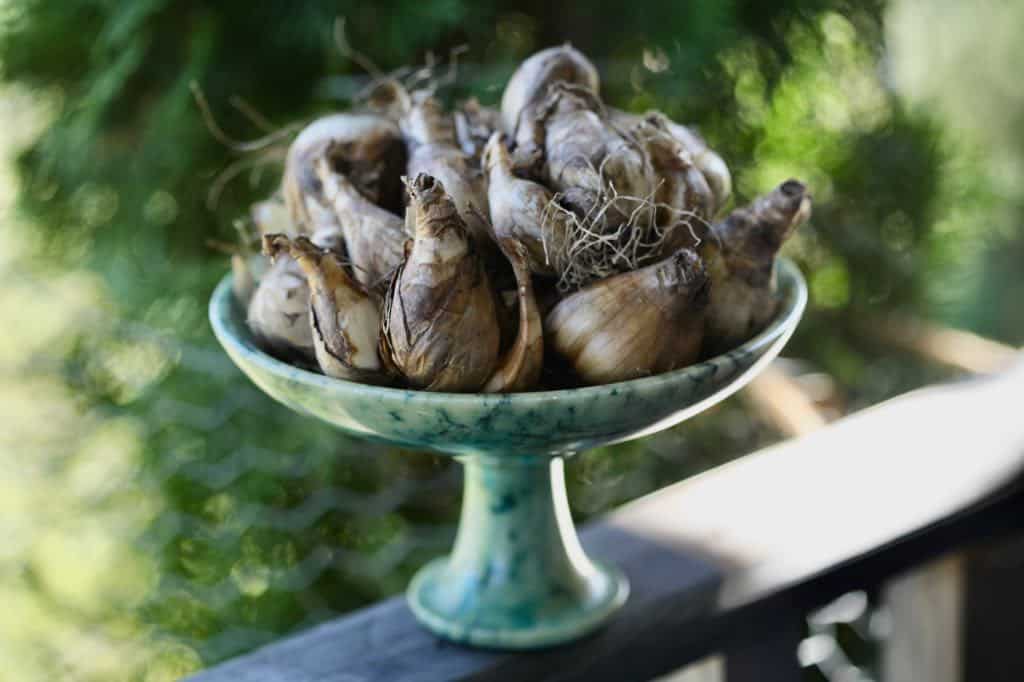
How To Plant Daffodil Bulbs
Daffodils bloom in the spring, so plant the bulbs in the fall before the ground freezes. To plant daffodil bulbs, choose a sunny location with well-drained soil. Plant in groupings of odd numbers into a hole that is 6" deep. Space the bulbs 3 to 5 inches apart, and ensure that the pointed tip is facing upwards. Cover with soil and water in thoroughly. Then wait for a beautiful display of colorful blooms the following season.
For a more thorough description of the steps for planting daffodil bulbs, keep reading along!
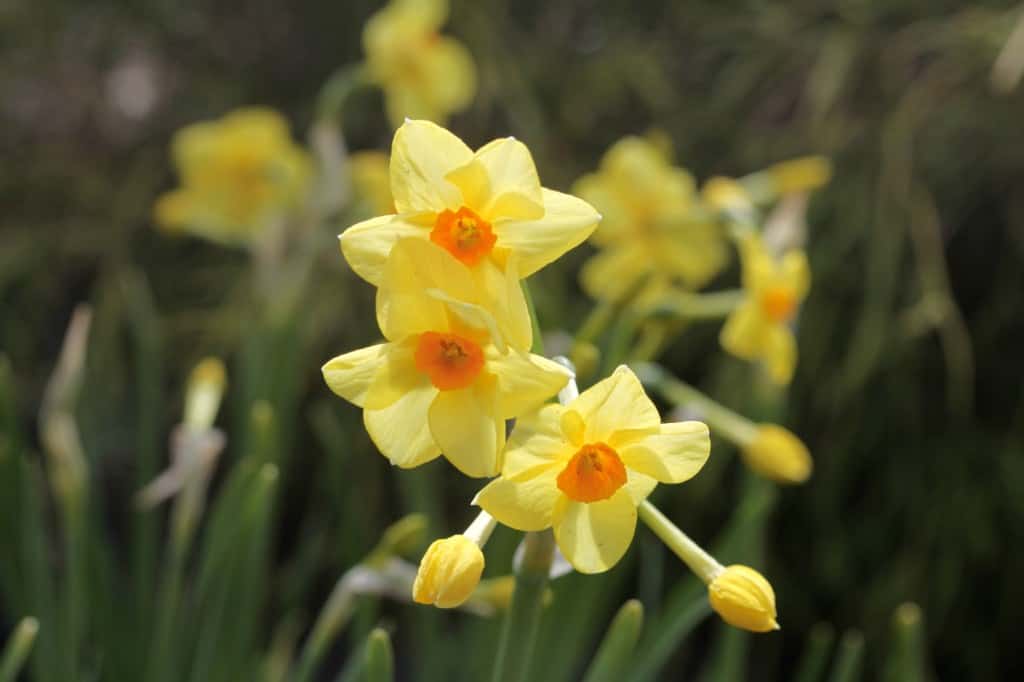
Why Plant Daffodils?
Here are some great reasons to plant daffodil bulbs:
- Daffodils are hardy perennial flowers, that grow from bulbs.
- They are often some of the earliest spring flowers to make an appearance, with their cup-shaped flowers, bringing vibrant hues of yellow, white, and even orange into the garden.
- Daffodils are often seen growing in the spring garden at the same time as tulips, grape hyacinths, and hyacinths, and are good companion plants for these other flowering bulbs.
- Their cheerful and bright flowers are a symbol of spring, and a welcome sight to the garden space after a long winter season.
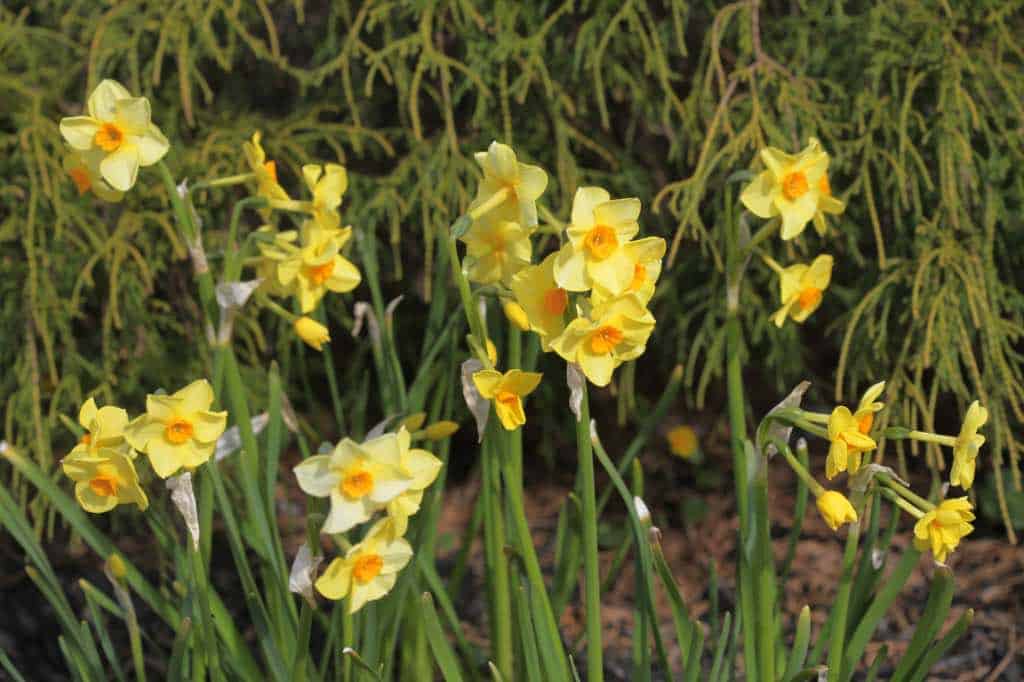
- Daffodils are versatile plants, and a good choice for a variety of different garden types. They are popular in perennial beds and borders, rock gardens, and can even be naturalized in grassy areas.
- These are low maintenance plants, often seen growing in drifts as they become naturalized in the garden.
- Daffodils are pest resistant, and generally are not at risk to damage from rabbits and deer. The deer completely avoid the daffodils in our garden, selectively choosing the more palatable and edible spring plants, such as tulips.
- Early daffodil flowers are an excellent source of nectar and pollen for pollinators in the garden. Daffodils play a role in supporting these important insects at the beginning of the growing season.
- Daffodils also make wonderful cut flowers, with their bright colored flowers and long lasting blooms. If you have daffodils growing in the garden, bring some inside to enjoy in your vase.
- Many daffodils are also fragrant, which is an added bonus, especially when enjoying them indoors.
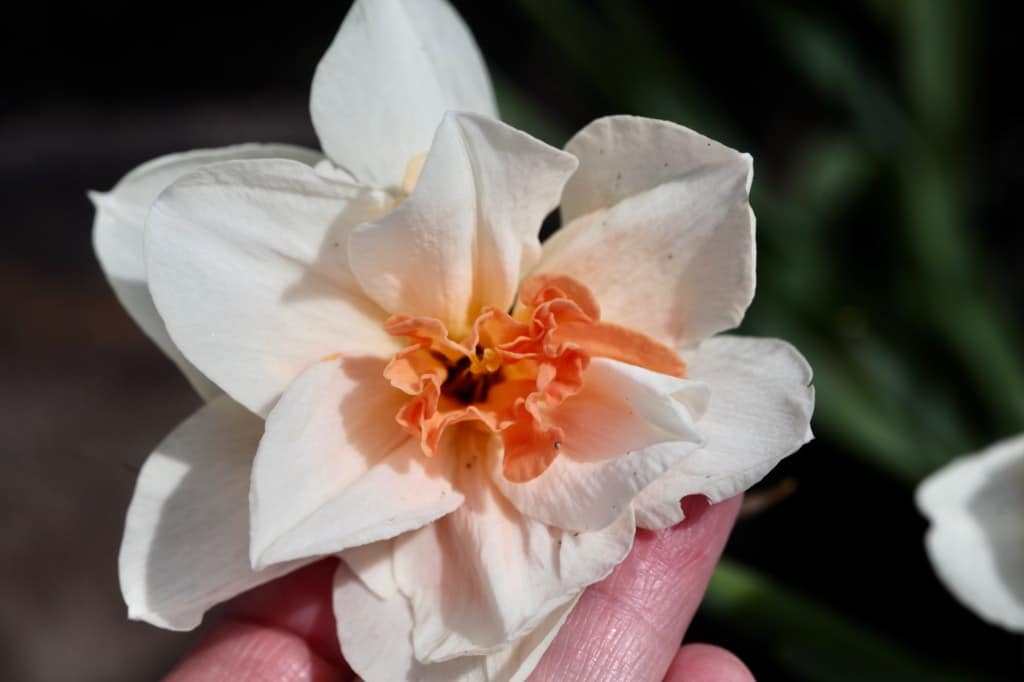
Choosing The Right Bulbs
Daffodil Bulbs
Choosing the right daffodil bulbs is an important consideration for planting.
Daffodils, or Narcissus, are a diverse group of flowering bulbs with a wide selection of varieties. Each variety has it's own unique set of characteristics.
Make sure to choose a variety that it well suited to your growing zone, as not all varieties will grow well in all climates.
For example, paperwhites, or Narcissus Papyraceus, are a tropical variety of daffodil that we generally force indoors in winter. However this variety does not survive overwintering in our zone 5b garden.
Know your USDA plant hardiness zone, and plant daffodils which are hardy to your growing zone.
Your garden center will carry the varieties that will do well in your area.
Choose healthy and firm bulbs which are free of mold or signs of damage.
Large bulbs will often produce larger and more robust flowers.
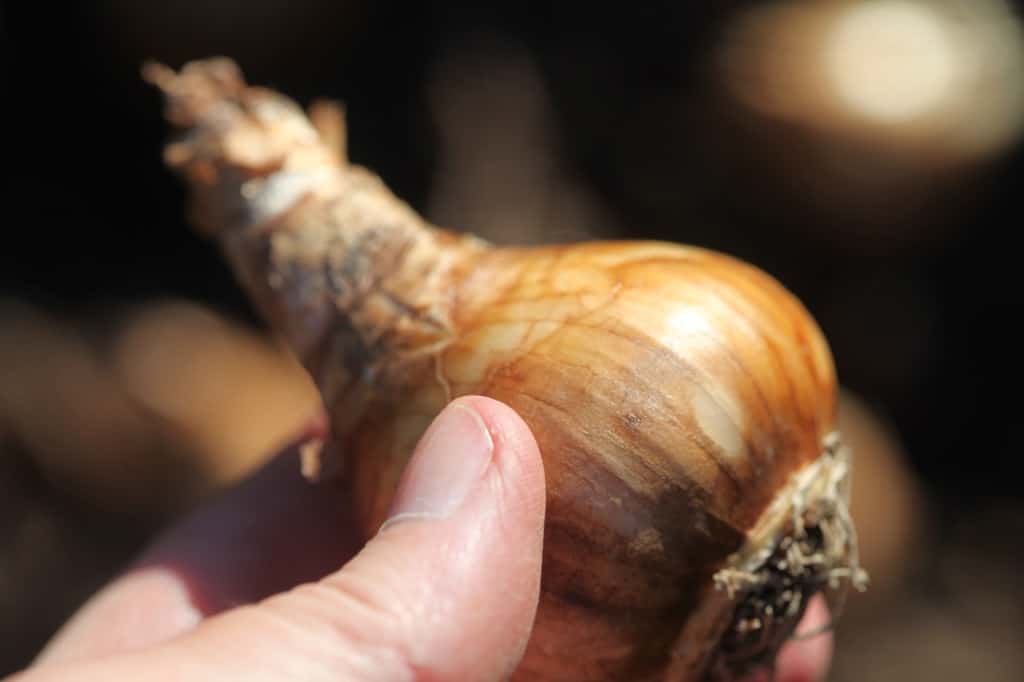
Varieties Of Daffodils
Daffodil varieties can have differences in flower shape, color, size, fragrance and bloom time.
Some varieties may have single trumpet-shaped blooms, while others may have multiple flowers per stem. There are large and small cup-shaped varieties, pendant shaped varieties, doubles, and even miniature daffodils for rock gardens.
The great thing about daffodils is that there is a large selection to choose from, so you can choose the ones that best suit your own climate, garden landscape, and aesthetic.
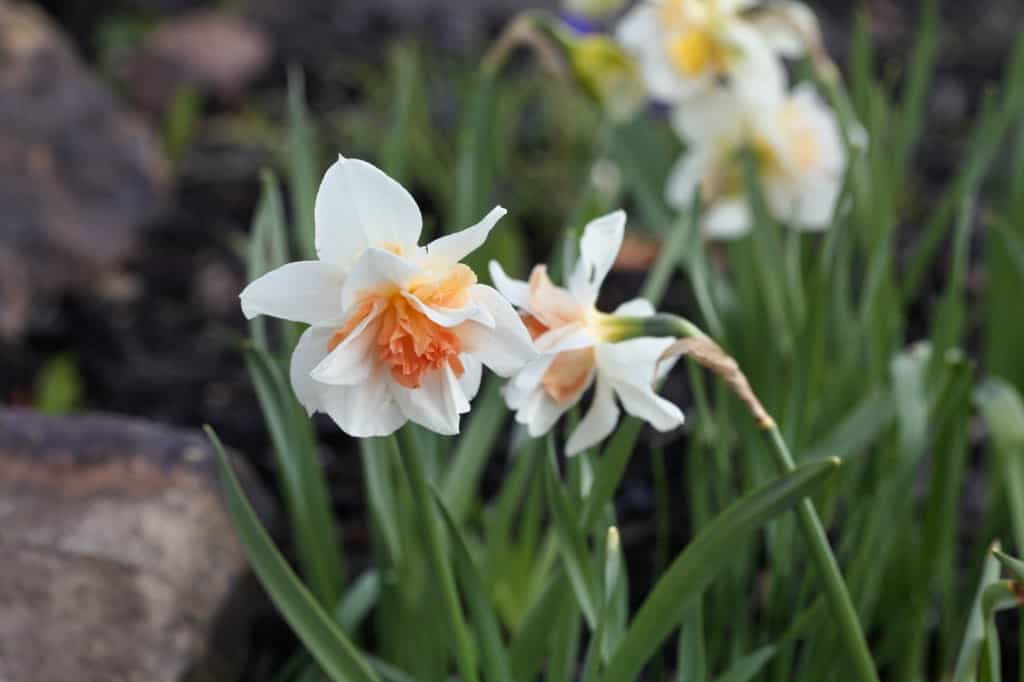
Select a combination of early, mid and late-blooming varieties, to extend the daffodil season with a succession of blooms.
Early-Blooming Varieties
- Examples of early-blooming daffodil varieties include Tête-à-Tête, Jetfire, Rijnveld's Early Sensation, and February Gold.
- Early-blooming daffodils are some of the first to bloom. Bloom time is dependent on your growing zone.
- In warmer growing zones some of these varieties may begin to bloom in late winter to early spring. Here in zone 5b our early daffodils don't bloom until late April.
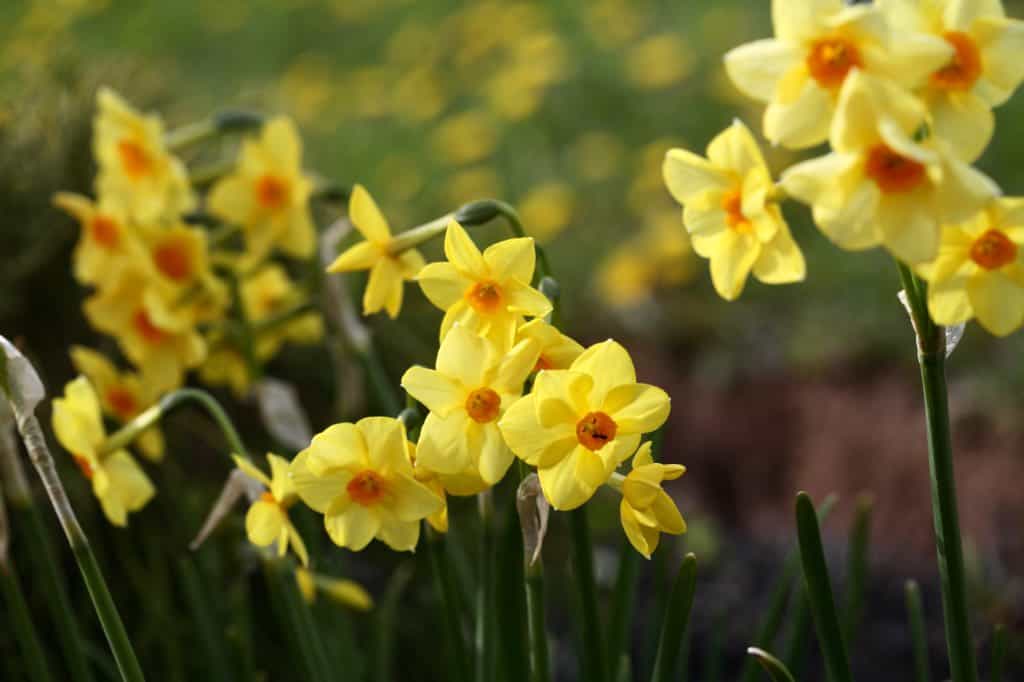
Mid-blooming Varieties
- Examples of mid-blooming daffodils include Pink Charm, King Alfred, Salome, and Ice Follies.
- These daffodils tend to bloom in mid spring.
- Timing of blooming is zone dependent.
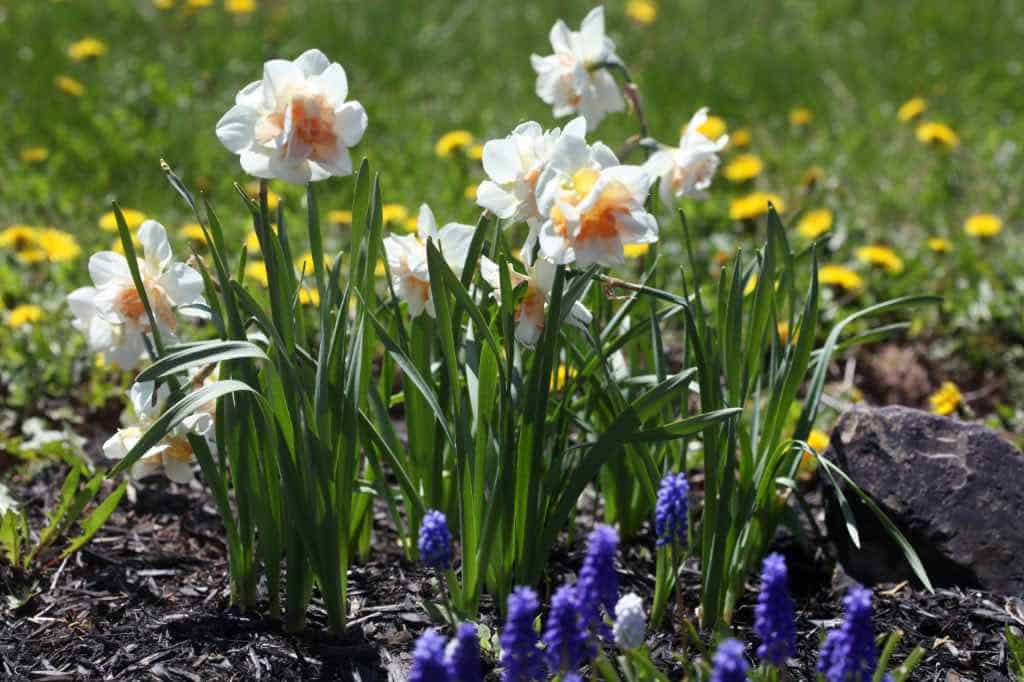
Late-Blooming Varieties
- Examples of late-blooming daffodils include Pink Pride, Thalia, Cheerfulness, and Mount Hood.
- Late-blooming daffodils can extend the daffodil season into late spring.
- These plants can often be found in the perennial border, and make great cut flowers.
Planting Daffodil Bulbs
Planting daffodil bulbs is quite easy, generally speaking. By using some simple principles for planting your bulbs, you will have a beautiful display come spring.
The bulbs can be planted either directly into the garden, or planted into a container for a more portable option.
Daffodils look best when planted en masse, with multiple plants growing and flowering together in one location. This type of group planting really makes a statement, creating a bright splash of color from the multiple flowers.
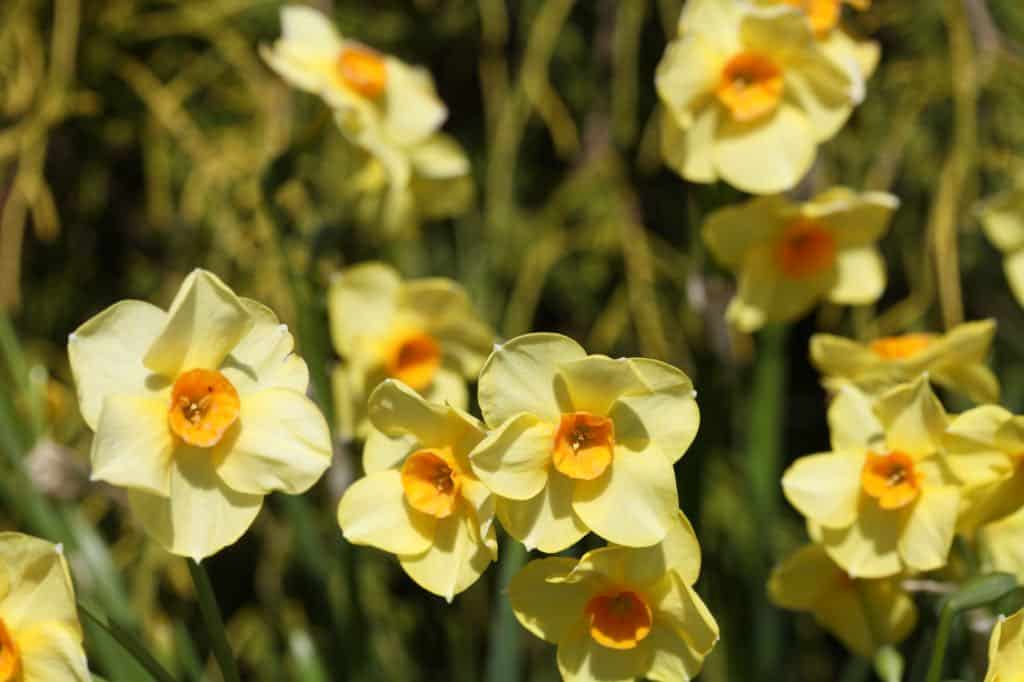
Where To Plant
The location of planting, as well as the growing conditions, will make a difference in the flowering ability and lifespan of the daffodil plants.
Light Requirements
- Plant daffodils in a sunny spot for best flowering potential. The plants will also grow in a partial shade location, however should receive at least 6 hours of full sunlight per day to thrive and multiply.
- Make sure to take note in the fall when planting close to deciduous trees, which may have lost their leaves. Will this become a shady spot in spring, when the trees fill out with their new spring foliage?
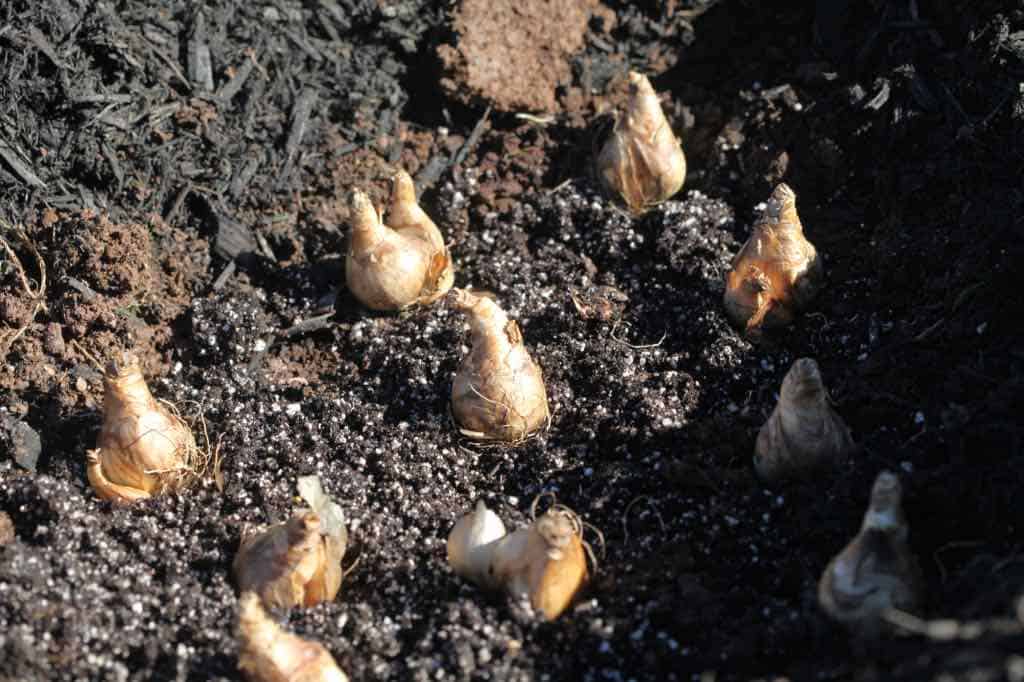
Soil Requirements
- Daffodil bulbs grow well in moderately fertile soil, which is slightly acidic to neutral, with a ph of 6.0 to 7.0.
- The bulbs also prefer soil which has a loose texture, at least initially, which is helpful when they begin to form new roots after planting.
Drainage Requirements
- As with most bulbs, make sure to plant in well-drained soil, to reduce the risk of bulb rot.
- This is an important consideration for longevity of your daffodil planting.
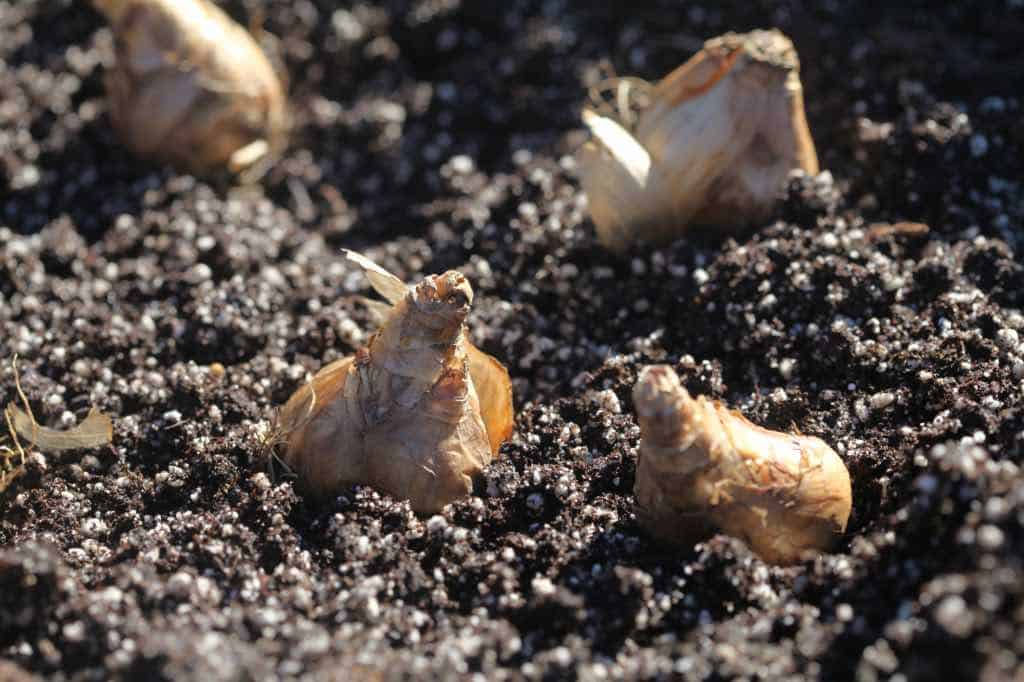
When To Plant
The best time to plant these spring-blooming bulbs is in the fall, from September to November, approximately 6 weeks before the ground freezes. This will allow the bulbs to establish roots in the new planting location, to prepare for blooming in spring.
It's best to plant when the soil has cooled down, and the soil temperature is less than 60°F (15°C), which is typical of soil temperatures in early fall. Avoid planting in hot weather, as this can cause stress to the bulbs.
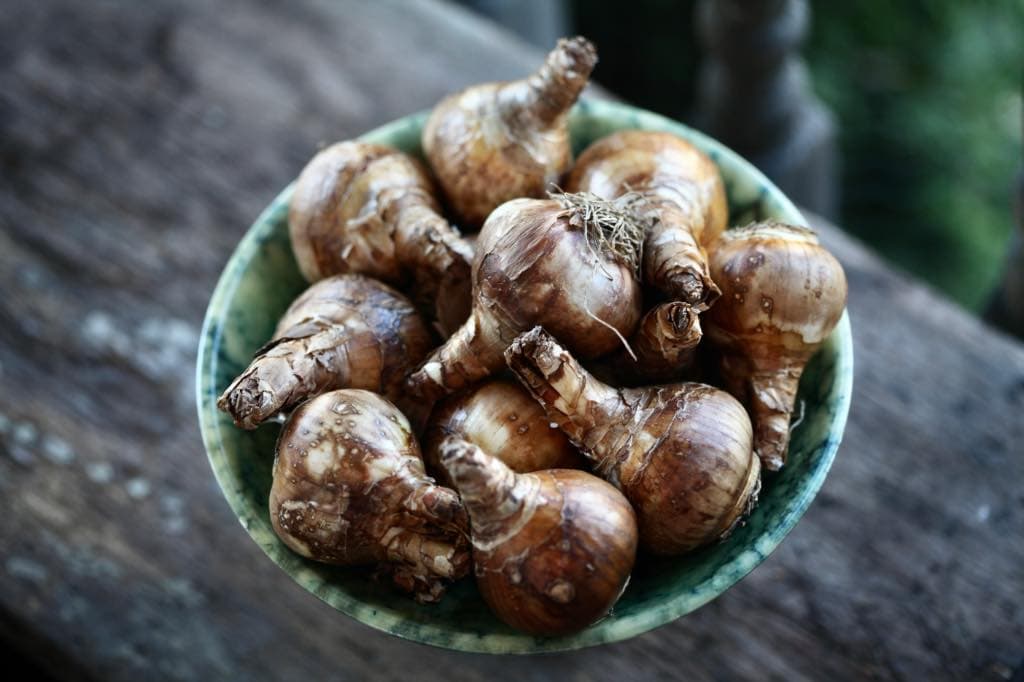
Fall planting allows for a winter chill period. Daffodils will benefit from a cold period, or winter chilling, although they do not require as long of a chill period as tulip bulbs and hyacinths do.
This cold period will help to initiate the flowering process.
Daffodils are known for their adaptability to grow in a wide range of climates, even in areas with mild winters and temperate climates.
In warmer climates or tropical regions however, make sure to plant pre-chilled bulbs to ensure successful flowering in spring.
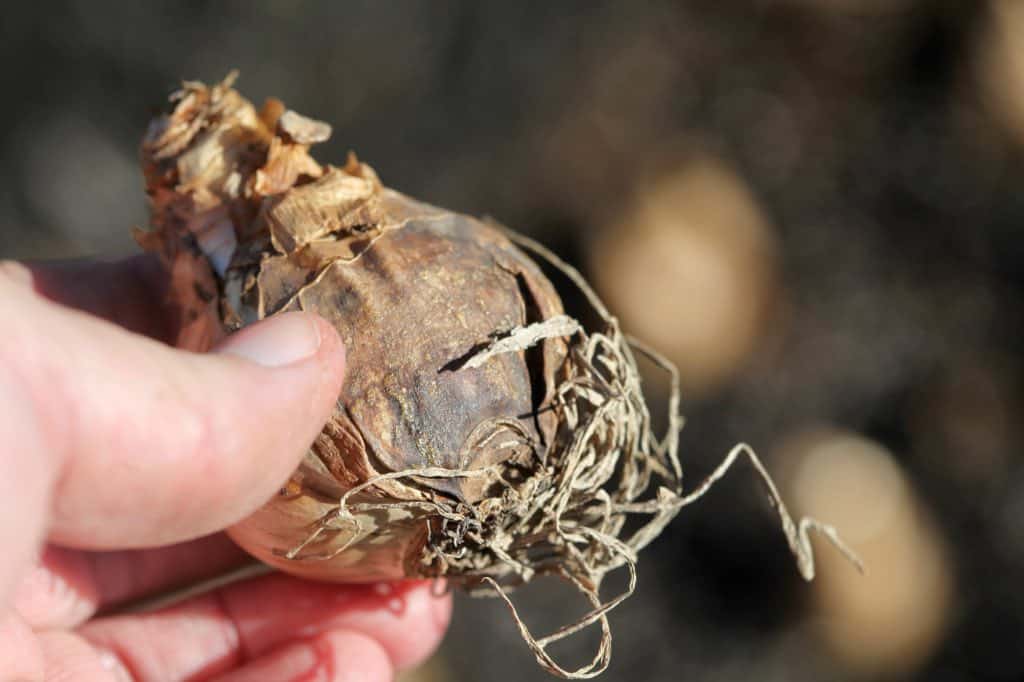
How To Plant
Select The Location
- Ideally choose a full sun location, however if the area has partial shade, make sure that the plants will receive at least 6 hours of sunlight daily.
- Ensure that the chosen area for planting has good drainage and is free of standing water.
- Planting on a hill is an ideal location, as this will provide drainage of water away from the bulbs.
Prepare The Garden
- Actively loosen the soil in the planting area before planting the bulbs.
- Amending the soil with organic matter before planting can help to loosen the soil, which will promote healthy root development and better establishment in the ground.
- Adding compost, well rotted manure, or leaf mold can help with soil structure and drainage, and help loosen the soil.

Planting Into The Garden
Daffodil bulbs can be planted in several ways.
- I like to plant them all together in one large hole, spacing appropriately.
- You can also plant the bulbs individually using a bulb planter.
- To plant in one hole, dig a large hole at least 6 inches deep, and wide enough to accommodate the number of bulbs that you will be planting together.
- Plant the flower bulbs with the pointy end facing upwards.
- The planting depth of the bulb should be approximately 6" deep, or 3 times the height of the bulb. The 6 inch depth would be most commonly used for a bulb which is approximately 2" high.
- Space the bulbs approximately 3" to 6" apart to allow for multiplication of the bulbs over time. As the bulbs multiply, they will fill in the area.
- Cover the bulbs with soil and gently firm down.
- Water in after planting, to help settle the soil and remove air pockets.
- To plant with a bulb planter, plant the bulbs individually at the same depth, however plant in groupings for a more naturalized look.
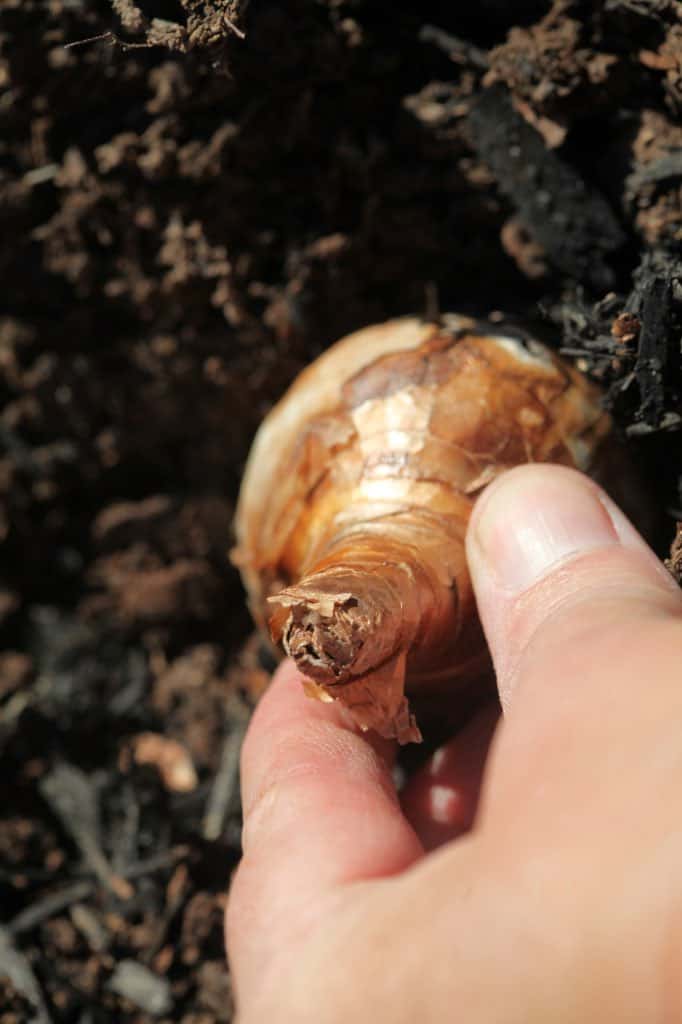
Planting Into Containers
- Daffodils look great in a potted display.
- Paperwhites always come to mind, as these are my favorite potted Narcissus bulbs.
- You can also pot up hardy garden daffodil bulbs, using the same principles for planting into the garden.
- Plant into a deep container with a good potting mix, and make sure that there are drainage holes in the container to provide good drainage.
- Make sure to plant at the same depth, approximately 6" deep, and about 3" to 4"apart.
- Water in well after planting.
- Before the ground freezes in your area, bring the potted bulbs inside to a more sheltered location.
- Place the container in a cool area, such as an unheated garage.
- Bring the potted bulbs back outside in spring. Place in a sunny location, and when the weather warms up, the bulbs will wake up and begin to grow.

Post Planting Care
- Daffodils are low maintenance plants, and generally require little care after planting.
- Fertilize sparingly, if at all. Daffodils are not heavy feeders, and application of fertilizer may lead to reduced blooming and increased foliage growth, so use with caution.
- Providing a light mulching with leaves or a wood mulch in cold climates will help to insulate the bulbs, and add organic matter to the planting area.

Frequently Asked Questions
How Long Will Daffodils Live?
Daffodils are perennial bulbs, and will last for about 3 to 5 years.
Keep in mind that the bulbs will also propagate by multiplying, making new bulbs, which will perpetuate the daffodils in the garden.
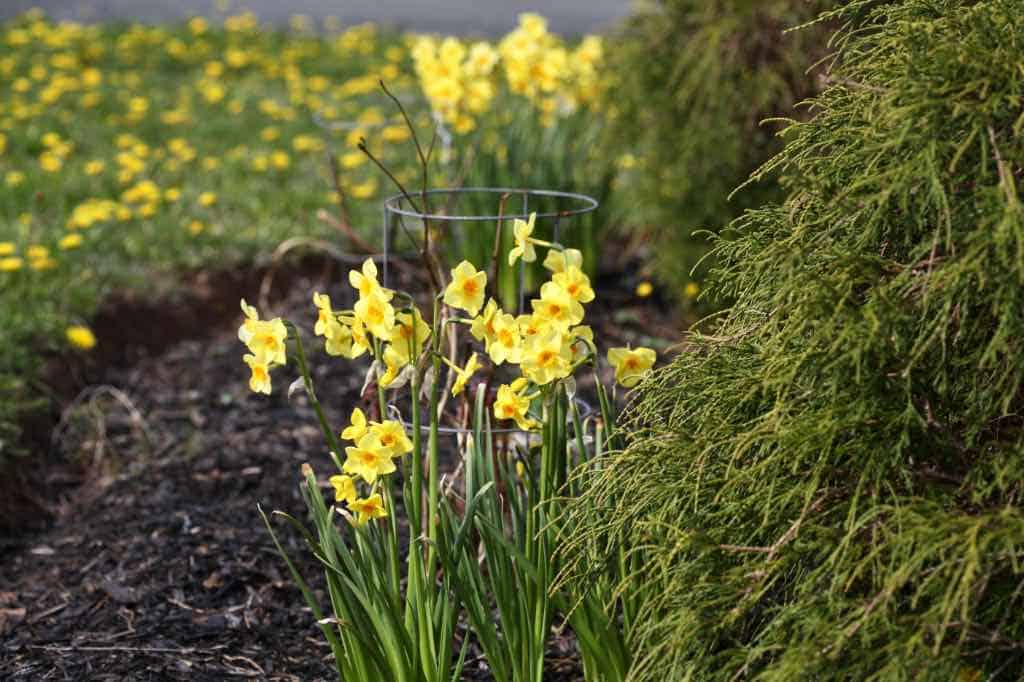
How Many Daffodil Bulbs Are In A Hole?
You can plant as many daffodil bulbs as you so chose, just make sure that you make the size of the hole large enough to accommodate the recommended spacing between the bulbs, of approximately 3 to 5 inches.
There is no hard and fast rule, such as the number of bulbs per square foot, however just remember to provide adequate space between the bulbs.
I personally prefer planting in large drifts, as these groupings of bright colors make an impact in the garden. To do this, I plant lots of daffodil bulbs together, in large and wide holes.
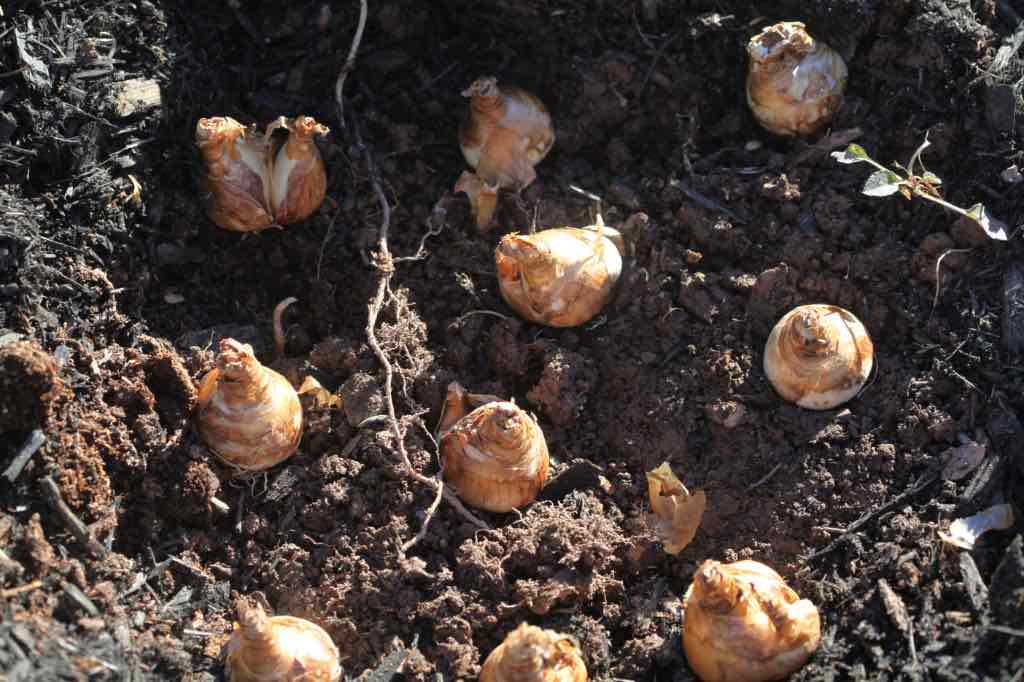
How Do You Get Daffodils To Bloom Again?
Daffodils will not bloom again in the same growing season. However they will likely return to the garden the following year, if they store enough energy for blooming, and they receive the right maintenance and care.
Allow the daffodil foliage to die back and yellow naturally after blooming, as this will allow the green leaves to photosynthesize and store the important energy required for next year's blooms.
Ensure enough sun exposure for energy production ( at least 6 hours of sunlight per day).
Avoid overcrowding of the bulbs to allow each bulb to receive the right amount of nutrients.
Also avoid over fertilizing, which could result in lovely green foliage with no flower production.

Conclusion
Planting daffodil bulbs in fall will result in a colorful and vibrant display of flowers the following spring, and hopefully for many seasons to come.
These resilient flowering bulbs come in a wide range of varieties, with many cultivars to choose from.
The bright fragrant flowers look beautiful in the garden, and also shine in the vase, when used as cut flowers.
By following the right planting techniques and post planting care, you can look forward to a stunning display of daffodils in your garden year after year.
So roll up your sleeves, and plant some daffodil bulbs this fall. You will be rewarded for your efforts next spring, as well as in future seasons to come!

Have you ever tried to plant daffodil bulbs into the garden or into containers? Be sure to leave a comment below to share your experience!
Other Posts You May Like:
See the Web Story on Planting Daffodil Bulbs In Fall!
PIN IT FOR LATER!
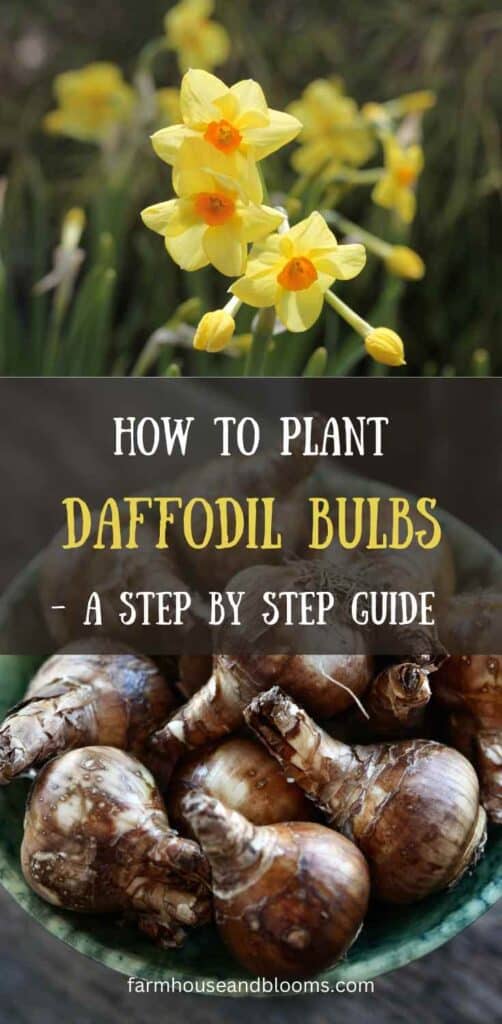
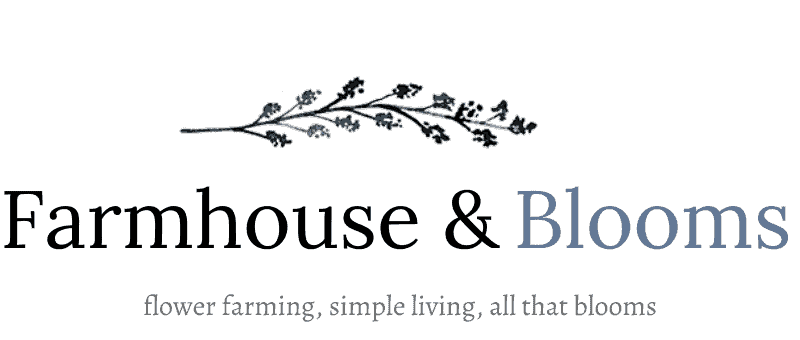

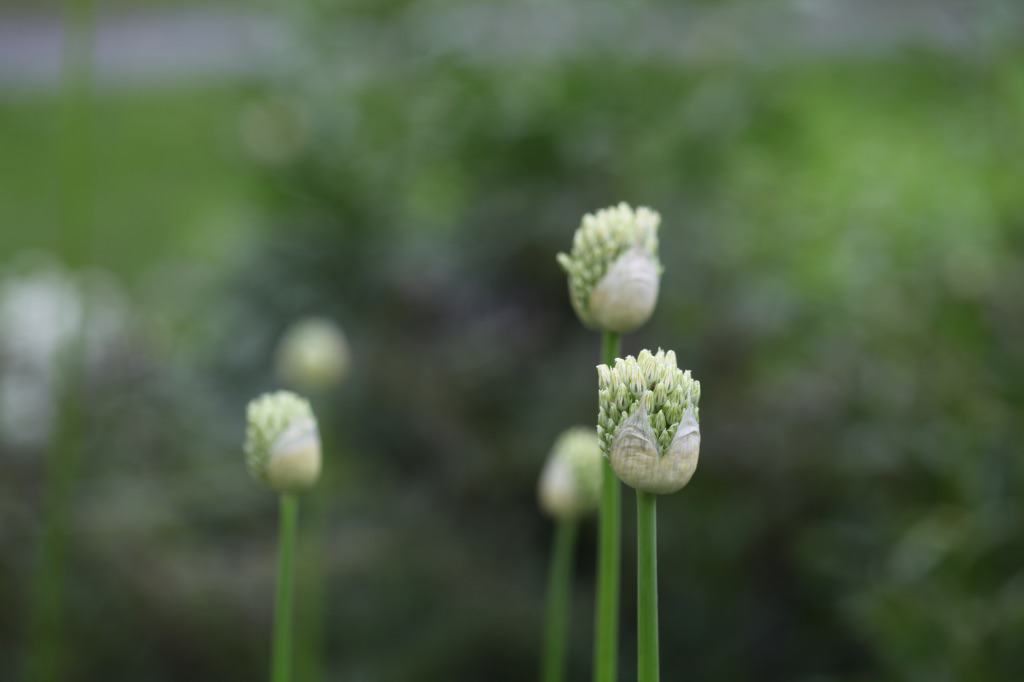
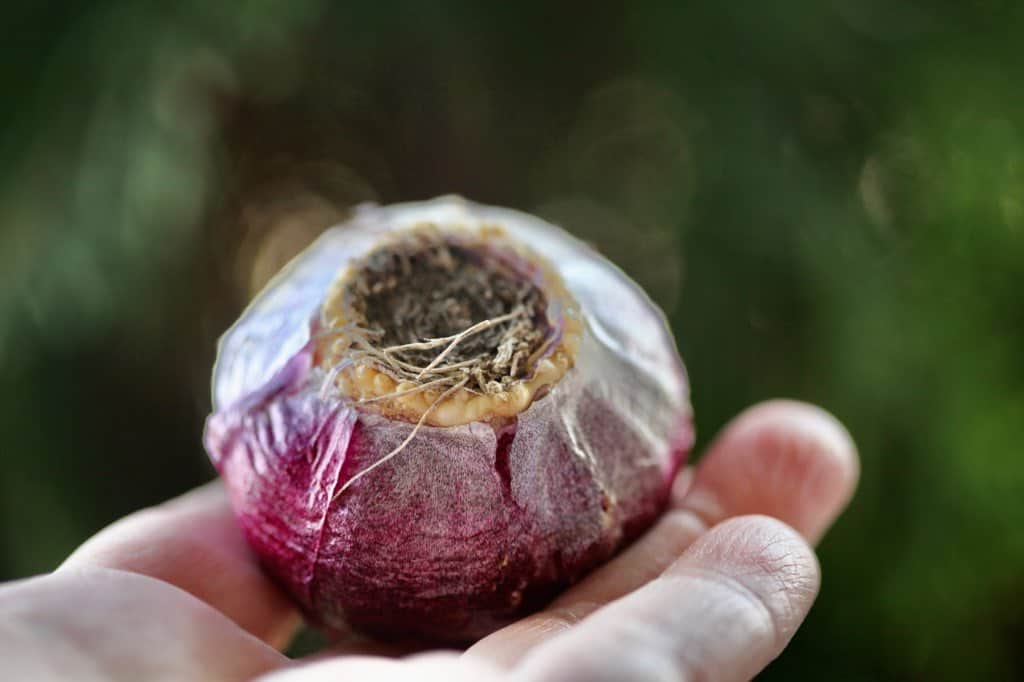
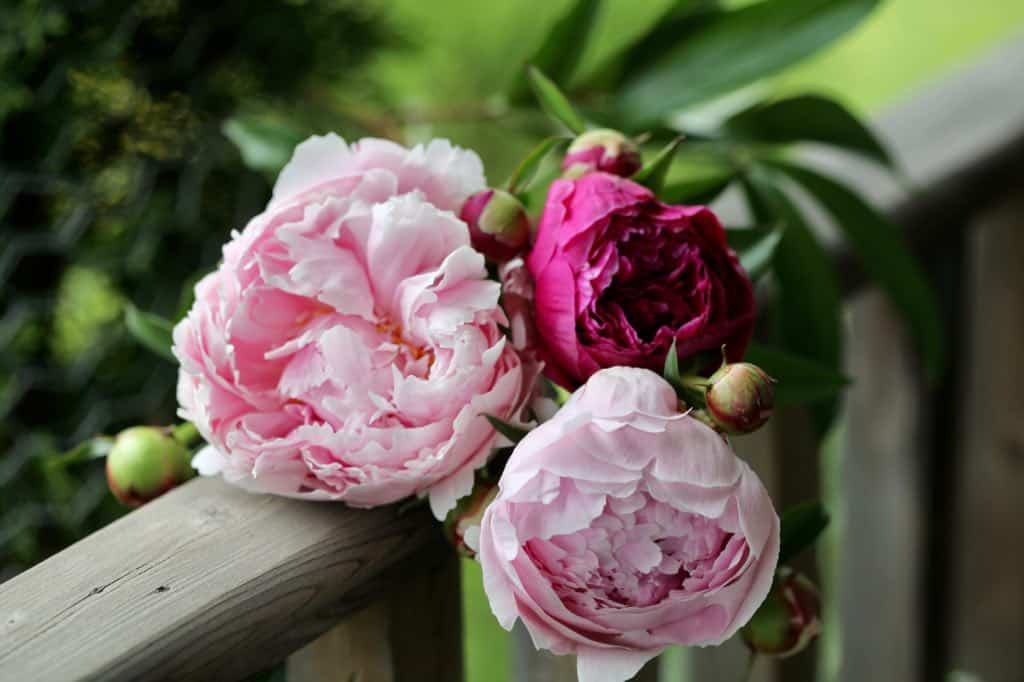

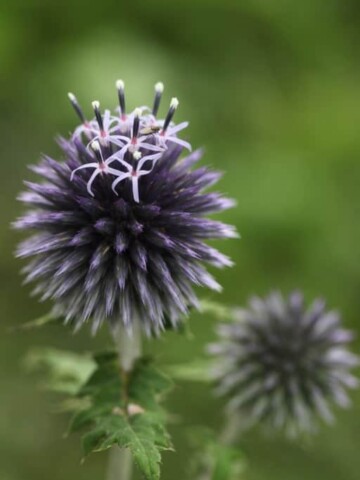
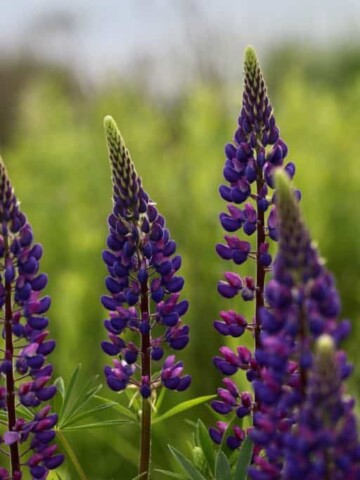
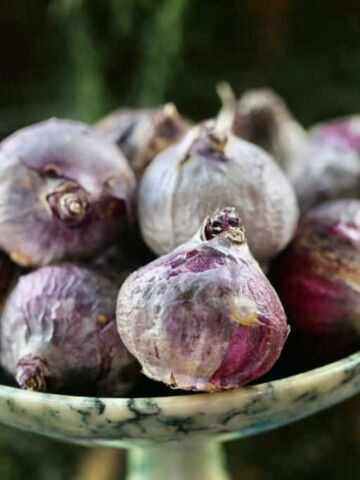
Leave a Reply